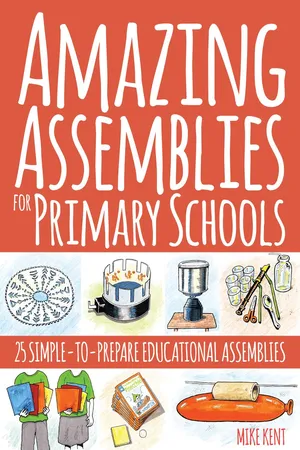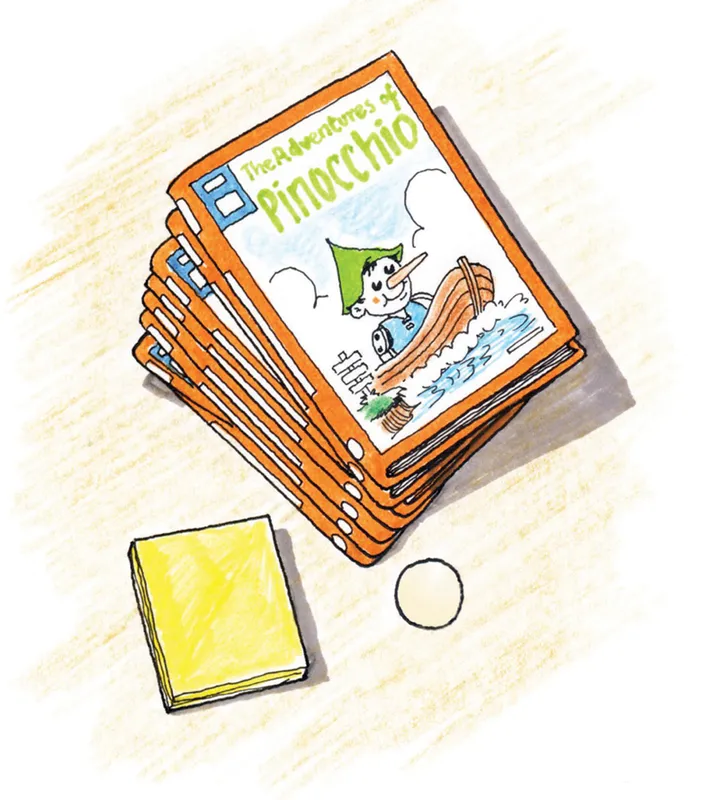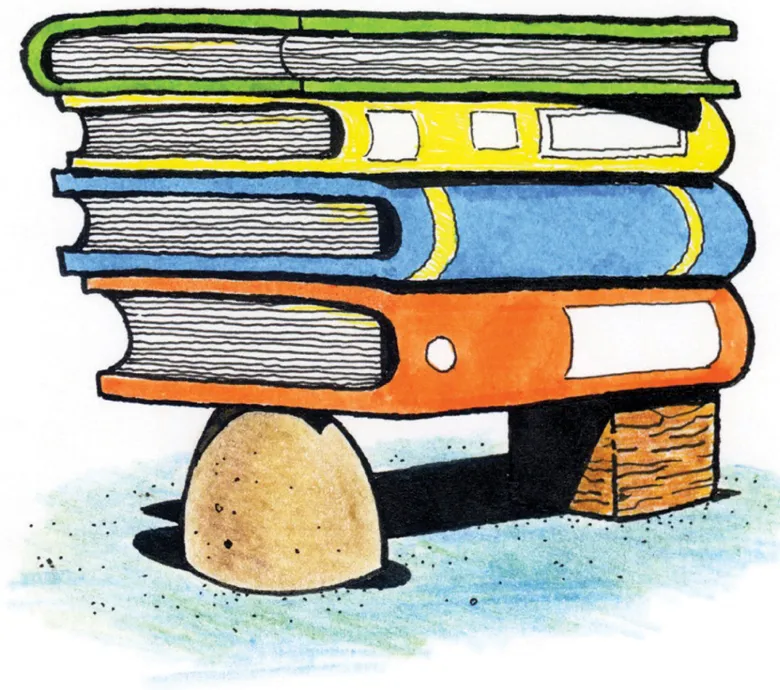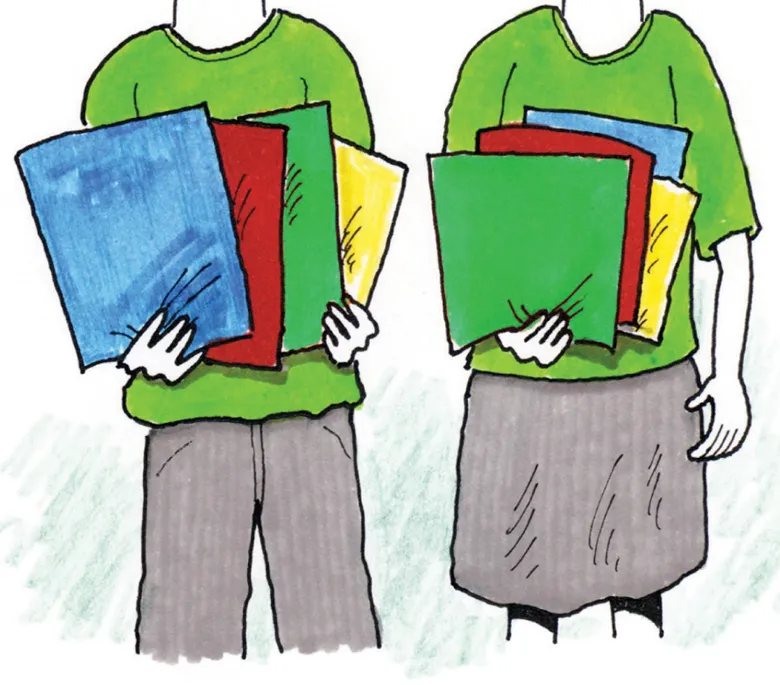
Amazing Assemblies for Primary Schools
25 Simple-to-Prepare Educational Assemblies
- 304 pages
- English
- ePUB (mobile friendly)
- Available on iOS & Android
About this book
Primary school assemblies should be exciting and interesting. They should allow children to share in valuable learning experiences. Over his 30 years as a head teacher, Mike Kent has developed amazing assemblies that do just this, and he shares them in this new practical resource. Amazing Assemblies for Primary Schools consists of twenty-five very special teacher-led assemblies: ideal for teachers, head teachers and, indeed, anyone who is required to lead assemblies. The assemblies have been designed with the busy teacher or school leader in mind and are really simple to prepare. The detailed instructions outline the resources and preparation needed. Every assembly is straightforward and uses materials that are readily available in school. You'll discover how to fascinate a group of children using little more than a pair of scissors and a few sheets of paper. Just how strong is an eggshell? How can you pick up a bottle without using your hands? How can you make a coin move without touching it? The answers to these questions, and many more, are revealed in this amazing resource: take your children on a journey of hands-on learning and discovery. The tried-and-tested assemblies are ideal for presenting to large groups of children and all have an interactive element, encouraging children to participate as helpers. They cover a vast range of subjects, drawing cross-curricular links from across the primary curriculum. There are science experiments, art demonstrations, problems to solve, word games, maths puzzles, quizzes and much more. Each assembly centres on a theme, which can be developed in many different ways afterwards: follow-up ideas make it easy to explore the learning further. Children can try the ideas themselves in class or at home. Although the assemblies are primarily aimed at Key Stage 2, many are also eminently suited to Key Stage 1. Each assembly outlines the materials and preparation needed, gives step-by-step instructions for introducing and delivering the assembly and offers plenty of follow up ideas. Planning and delivering an innovative, child-centred assembly has never been easier! Amazing Assemblies for Primary Schools is an ideal practical resource for anybody required to take primary school assemblies.
Frequently asked questions
- Essential is ideal for learners and professionals who enjoy exploring a wide range of subjects. Access the Essential Library with 800,000+ trusted titles and best-sellers across business, personal growth, and the humanities. Includes unlimited reading time and Standard Read Aloud voice.
- Complete: Perfect for advanced learners and researchers needing full, unrestricted access. Unlock 1.4M+ books across hundreds of subjects, including academic and specialized titles. The Complete Plan also includes advanced features like Premium Read Aloud and Research Assistant.
Please note we cannot support devices running on iOS 13 and Android 7 or earlier. Learn more about using the app.
Information
THE EXTRAORDINARY EGGSHELL
WHAT IS THIS ASSEMBLY ABOUT?
WHAT YOU’LL NEED:







PREPARING THE ASSEMBLY

INTRODUCING THE ASSEMBLY
AND FINALLY …

COLOURFUL COMPUTATION
WHAT IS THIS ASSEMBLY ABOUT?

WHAT YOU’LL NEED:
PREPARING THE ASSEMBLY
Table of contents
- Cover
- Title Page
- Dedication
- Contents
- Introduction
- Assembly 1: The Extraordinary Eggshell
- Assembly 2: Colourful Computation
- Assembly 3: The Clever Coin
- Assembly 4: The Baffling Banana
- Assembly 5: Clever Cuts
- Assembly 6: The Moving Coin That Doesn’t Move
- Assembly 7: Addictive Addition
- Assembly 8: The Fearless Flyer
- Assembly 9: Give Me a Ring
- Assembly 10: Surprising Sevens
- Assembly 11: Alternative Art
- Assembly 12: Squashed Tomatoes
- Assembly 13: Lifting the Lid
- Assembly 14: So Who Am I?
- Assembly 15: Sound Sense
- Assembly 16: A Pressing Problem
- Assembly 17: Puzzling Paper
- Assembly 18: Whacky Words
- Assembly 19: Tantalising Tables
- Assembly 20: Musical Mayhem
- Assembly 21: Decorative Diffusion
- Assembly 22: Animated Antics
- Assembly 23: Serious Strength
- Assembly 24: Tension Tricks
- Assembly 25: Dedicated Discussion
- A Final Thought
- Copyright